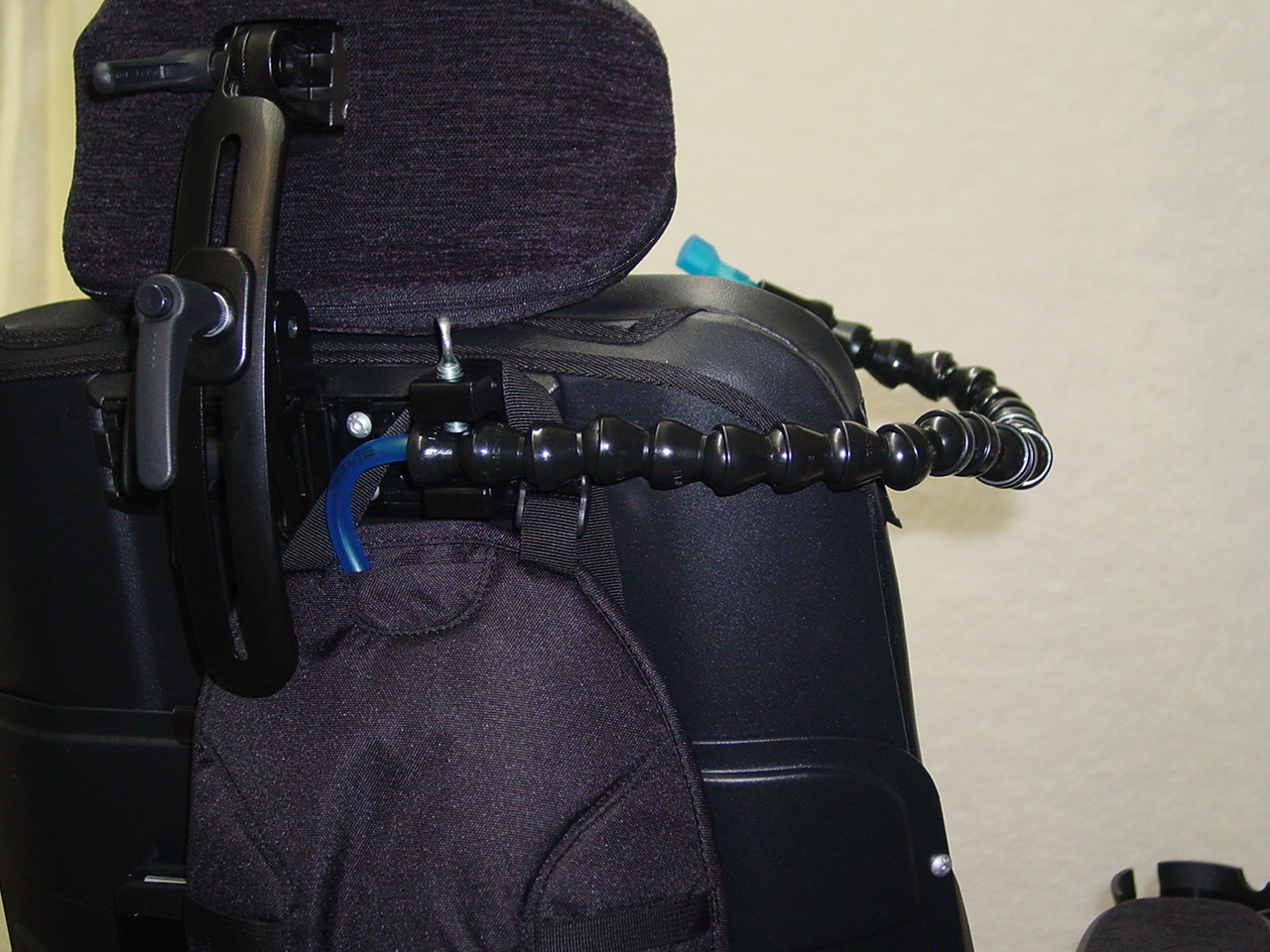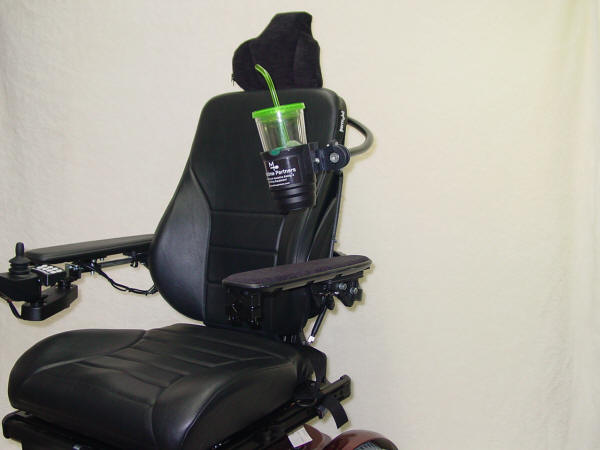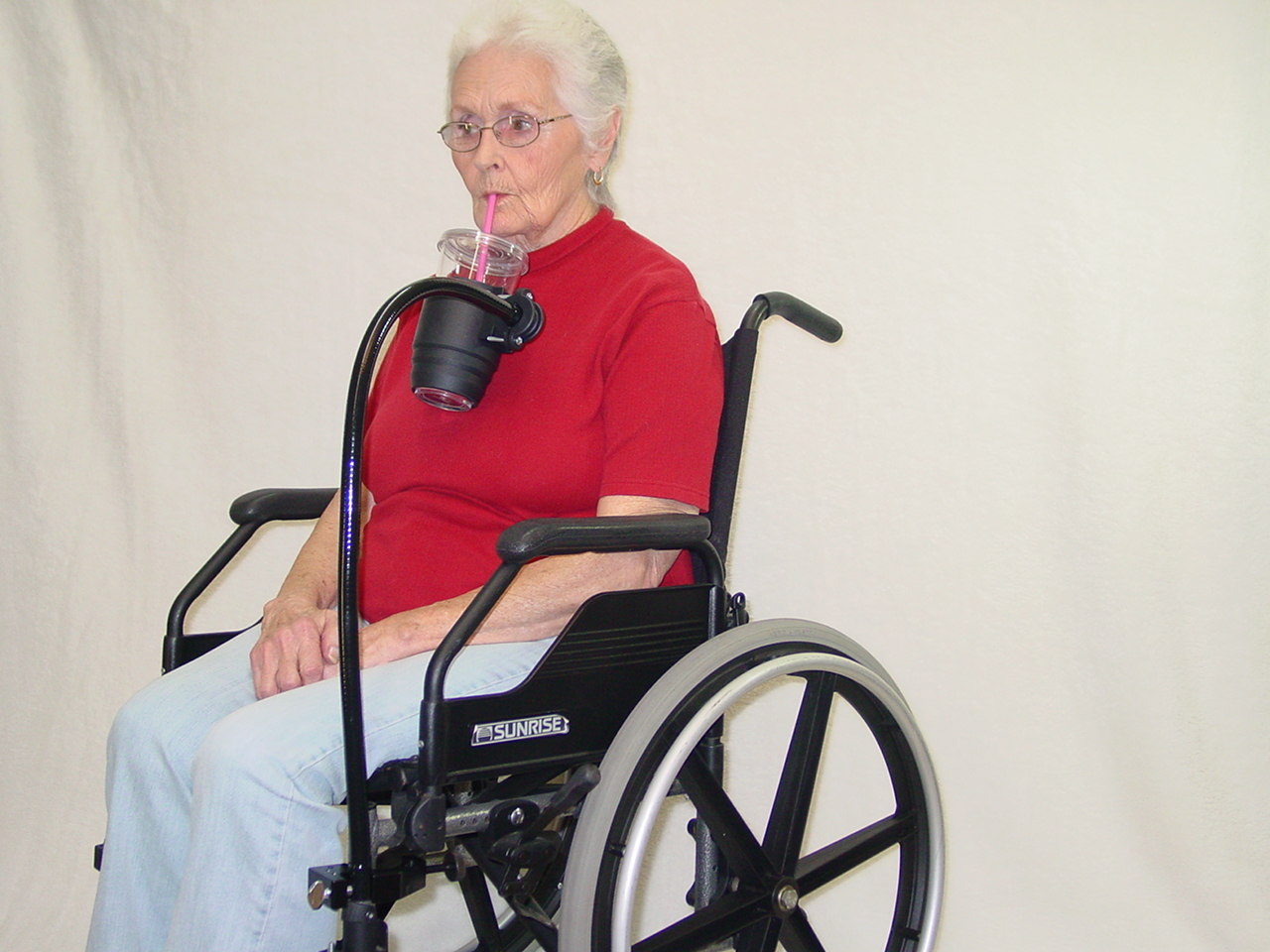Mealtime Partners, Inc.
Specializing in Assistive Dining and Drinking Equipment
July 2018 Independent Eating and Drinking Newsletter

|
July Topics:
|
||
|
Mealtime Partners Home Page Send a Comment or Suggestion |
|||
| Subscribe to Newsletters |
Plastic Straws are in the News
One-time-use
drinking straws that are thrown away after they have been used have been
in the news recently. In the
The problem with reusable straws centuries ago, was that they were expensive to make and difficult to keep clean and to avoid clogging. By the 1800’s people were drinking through rye grass straws. This type of straw would become mushy and dissolve when it came in contact with water, and therefore, was actually less than a single use straw! In 1888, Marvin Stone patented the first modern drinking straw. He wrapped paper around a pencil and glued the resulting tube together. Rapidly he refined his technique and created a machine to automate the manufacture of straws. His straws were strong enough that they held together regardless of what was being consumed.
Straws became, and have remained, very popular since that time. In 1937 Joseph Friedman modified the original straw design by adding a bend to the straw and after that, all sorts of weird designs for straws were developed. Designs became more complex during the 1960’s when plastic straws began to be manufactured. Many plastic straws can be reused, but the vast majority of them are thrown away after a single use. The problem with single use straws is that they contribute to plastic waste that, like plastic bottles and bags, has a significant negative impact on the environment. Fortunately, currently there are several companies beginning to manufacture biodegradable drinking straws. At present they are more expensive than their plastic competitors. However they are being used by many companies who find the additional expense worth paying to allow them to reduce their use of disposable plastic.
Environmentalists major effort currently is to ban the use of straws all together. Yet, there are people for whom a straw is an essential piece of equipment to allow them to be able to drink easily and comfortably, and in some cases, to be able to drink at all. An example is someone who does not have the hand and or arm function to be able to pick up a glass, or cup, and lift it to their lips to drink. An individual with this type of physical limitation is unable to control the volume and speed at which they drink liquid when someone else is holding and tipping the cup. Not only does this method of getting a drink increase the risk of choking (or even aspirating), it also increases the likelihood of liquid being spilled. It can be quite embarrassing to have a drink spilled on you and your clothes get stained. Yet this is a minor problem compared with those who literally can only drink through a straw without being put at great risk of aspirating!To facilitate people with disabilities who need a straw, regulations are being crafted that include a waiver that allows restaurants and other public facilities to keep straws available for those who specifically need them. However, Lawrence Carter-Long, communications director for the National Disability Rights Education and Defense Fund, said that he did not find that any restaurants were currently aware of the waiver, and after straws were banned, restaurants no longer have straws available for disabled, or any other customers.
The argument can also be made that anyone who needs a straw should use a reusable straw and carry one with them at all times. This is a great concept, and yet we all have days that we are in a hurry and leave home without something we really need, like a straw. Also, accidents happen, straws get dropped or damaged, or just become unsanitary, and so it is good to be able to access one when you are out and about.
The following article in this Newsletter describes different types of straws and drinking tubes and the pros and cons of using them. Also, Mealtime Partners sells reusable drinking tube and information about them and the products they are designed to work with can be found at Drink-Partner Drink Tube and Drink-Partner Oxygen Tubing.
| Independent Drinking |
|
For most individuals, dehydration is 100% preventable. However,
many people with disabilities suffer from some level of dehydration almost
constantly. Mealtime Partners various drinking systems allow many individuals
who are unable to use their hands to take a drink, to drink independently. For
example, the Hydration Backpack with Drinking Tube Positioning (pictured below)
provides hands free drinking throughout the day for those who
sit in a wheelchair and are unable to lift or hold a cup or glass. The drinking
system is quick and easy to set up. The liquid container fits on the back of a
wheelchair and the drinking tube can be positioned to meet the unique
positioning needs of each individual. |

|
| Easy to install and remove from the wheelchair to fill or clean. |
|
|
| Hands-free drinking, 70 fluid ounces of water available for people on the go! |
| The Front Mounted Drinking Systems pictured below, can position a variety of cups and drink containers very close to the users mouth for hands free drinking and allows a variety of other drinks to be made available throughout the day. For example, coffee in the morning, ice tea with lunch, a can of soda in the afternoon and a glass of milk before bed. The user drinks from their own container using a disposable straw. Because the straws and most of the containers can be disposed of, or washed in a dishwasher, it is the easiest drinking system to clean. It is available in several lengths of flex-arms and can be mounted on a variety of wheelchairs. |

|
Front Mounted Drinking System Front Mounted Drinking System on Manual Wheelchair |
| All of the Mealtime Partners drinking systems are available for attaching to manual wheelchairs (i.e., wheelchairs with a tubular handle or other tubular structural components) and for wheelchairs with the Slide-Track mounting rails. For more information about all of our drinking products, click here, or call us at 800-996-8607. |
Drinking through a straw or tube is an easy way to get liquid without having to lift and/or tip a cup or glass. Drinking through a straw puts the consumer’s head in a downward position. This position creates a chin-tuck that facilitates safer swallowing. However, not all straws are created equal and this article will examine the pros and cons of different types of straws/drinking tubes and how they relate to different users. This article will focus on drinking thin liquids. It will not address considerations relating to the thickness of liquids being consumed.
There are many reasons why one type of straw doesn’t meet the needs of everyone. A few of the reasons are:
-
Some people cannot pucker their lips into a tight enough “kiss” to make a seal around the straw.
-
Others need the straw to be placed into their mouth to the left or right, rather than centered, which completely prohibits creating a pucker.
-
Others need to tighten their jaw into a “bite” to be able to stabilize it sufficiently to be able to create enough suction to pull liquid up a straw. This action will crush many types of straws.
-
Others have a bite-reflex that will crush soft straws.
-
For others, consistent lip closure is difficult.
The common differences between straws are: the diameter of the straw, the length of the straw, the flexibility of the straw, the rigidity of the straw, and, whether the straw is disposable or reusable.
The Diameter of Straws: The diameter of straws varies from very small, like those found in Juice Boxes, to some that are as big as 3/8 inch in diameter. For straws with a small diameter, the user can either pucker their lips tightly to create a seal around them, or, the smallness of the straw allows them to purse their lips (i.e., press their lips tightly together rather than pucker), resulting in lip closure that allows suction. For larger diameter straws, users must be able to pucker their lips. Larger diameter straws facilitate drinking somewhat thicker liquids, like soup, milk shakes, and smoothies.
The Length of Straws: The ability to use longer straws depends upon the user’s capacity to suck (i.e., create a vacuum in their mouth). When all else is equal, it is easier to suck liquid through a short straw than through longer lengths. If a user has good suction, using a longer straw allows them to have their drink holder positioned farther away from their mouth.
The Flexibility of Straws: The common use of the term flexible straw refers to a disposable straw that has a short corrugated section close to one end of the straw. This allows the straw to be bent and positioned for access by the user. This type of flexible straw can be inexpensively purchased in boxes at the grocery store. They are commonly used in hospitals when it is impossible to have the user sit up to take a drink. It should be remembered that this drinking position puts the user at risk of aspiration, but in some circumstances, cannot be avoided. Many people like the angle that can be achieved using flexible straws.
Another form of flexible straw is made of polyethylene. Polyethylene reusable straws are somewhat pliable and, therefore, can bend. Also, they can accommodate being bitten by the user without collapsing.
The Rigidity of the Straw: Some reusable straws are made of Plexiglas® and are completely rigid. They have the advantage that they can be heated with a heat gun and bent to accommodate the user’s positioning needs. After cooling, the bends in the tube will be permanently maintained. However, due to the rigidity of these straws, an individual will probably be required to use it when it is positioned in the center of their lips to create a good seal. They must also be able to pucker their lips, and not need to clench their jaw over the straw to be able to suck. Rigid straws have an additional benefit in that they will not crush if they are bitten.
Disposable Straws: Disposable straws can be purchased by the box at grocery stores, either unwrapped or individually wrapped. Almost all straws that are sold at grocery stores are 7 ½ to 8 ½ inches long and have an approximate (outside) diameter of ¼ inch. Many different length and diameter disposable straws are available at fast food restaurants, convenience stores, or bars. Often these organizations are willing to sell or give a box of straws to someone who asks for them. Disposable straws are very convenient to use because they can be used once and thrown away. This is an important hygiene consideration because straws are very difficult to wash. Disposable straws have one serious short coming for some individuals, they can crush when they are bitten. And, once bitten, the flow of liquid is restricted or stopped. However, disposable straws are the most hygenic to use if the straw is long enough and crushing the straw is not an issue for the user.
Reusable Straws: Many cups and bottles, including some sold by Mealtime Partners (Mealtime Partners Drinking Products), are supplied with reusable drinking tubes as part of their structure. Also, reusable straws can be purchased separately. They come in assorted lengths and rigidity of material. The diameter of most straws range from 1/8 inch to 1/4 inch and the lengths vary from 7 inches to 32 inches. Many reusable straws, even though they are too long, can be cut to shorter lengths. (If they are cut, special attention should be paid to the end that is cut to be sure that the straw does not have any sharp edges. A fingernail file or fine sandpaper can be used to smooth rough edges. Also, if they are cut, be sure to properly sanitize the straws before use, .)
Hygiene is another issue when using reusable straws. It is difficult to be sure that they are well cleaned and sterilized. If the user bites down on the straw, after a few uses special attention should be paid to the teeth marks at the end of the straw during washing. Small brushes to clean the inside of the straw are available from Amazon, and health department recommendations for institutional cleaning should be used. Their instructions are to clean both the inside and outside of the straw as follows: wash in hot soapy water; scrub the interior with a brush; hot rinse; bleach water rinse; and, finally, a second hot rinse, and drain to dry.
Oxygen
Tubing: A good solution to the problem of a user who is not able to
use a rigid straw because they cannot close their lips around it, or who
crushes a disposable straw, is to use crush-proof oxygen tubing as a
straw. Crush-proof oxygen tubing has an interior structure called star,
or lumen, which prevents crushing. This is the same principle that guarantees
the delivery of oxygen, and it also works for liquids. The advantages of using
oxygen tubing as
drinking straws are:
-
Even if the tube is bitten hard, the liquid can still pass through the tube into the user’s mouth .
-
Many individuals must clench their jaws hard to stabilize their mouth around a straw, and oxygen tubing allows them to do this without prohibiting the flow of liquid.
-
The tube can be placed to the right or left of the user’s mouth and no puckering of the lips is needed.
-
Oxygen tubing can be cut to the desired length for the individual drinking
-
After it has been used a few times it can be thrown away because it is inexpensive.
In summary, it should be noted that drinking through a straw typically puts the individual’s head at a safer angle to drink than using a cup or bottle. When caregivers offer people a drink out of a cup or bottle they tend to be in a standing position to provide the drink, and when doing so, by default, are above the person’s head level. The natural action of the person getting a drink is to lift their head towards the person holding the cup. This position exposes the person’s airway unnecessarily to choking. Therefore, drinking through a straw should be encouraged.
In addition, straws are essential for totally independent drinking systems. Due to the great importance of proper hydration, Mealtime Partners recommends that everyone be provided the means to drink at any time they wish, and that drinking should not just be made available at mealtimes.
|
Did You Know? Did you know that the University of Southern California recently reported on a study that researchers at the facility conducted looking at the impact of screen time on teenagers? The study included 2,587 tenth-grade students in the Los Angeles school district. At the start of the study the students were evaluated using a standardized test for Attention Deficit/Hyperactivity Disorder (ADHD) symptoms. The students were then questioned every six months during the two year study period about their use of 14 different online activities, including texting, social media, videos, music, etc. The students reported how many of the activities they used, and how frequently they used them, both on a daily and weekly basis. Fifty percent of the students reported looking at social media and text many times each day. Study findings indicate that teens who were frequent users of 7 or more forms of digital media platforms were twice as likely to develop ADHD symptoms as students who did not use digital media frequently. Of the 51 students who used all 14 forms of online media regularly 10.5% showed ADHD symptoms, yet of the 495 students who did not use digital media on a regular basis only 4.6% showed signs of developing ADHD symptoms. Even though the study does not prove the relationship between digital media and ADHD development, it nevertheless indicates that there may be a strong connection . (Link to USC Study.) |
Click here to subscribe to the Mealtime Partners Newsletters.
Mealtime Partners Website Navigation:
Home | Dining | Drinking | All Products | Ordering | Training | Calendar | FAQ | Newsletters | Contact
Please send comments and suggestions to newsletters@mealtimepartners.com
Copyright © Mealtime Partners, Inc. 2018
All rights reserved.